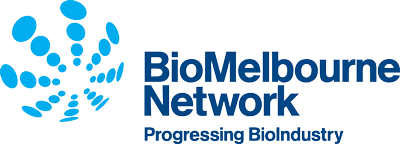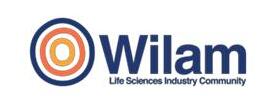Posted: 25 June 2025
This article recaps BioMelbourne Network’s BioForum “Stepping off the ledge – Quantum, AI technologies and the future of drug discovery.” It highlights key takeaways from the panel, insights from experts across quantum science, AI, and health innovation, and explores how curiosity, capability and collaboration are converging to shape the future of medicine discovery. Reading time: 6-7 minutes.
What if we could simulate drug discovery before we ever touch a lab bench? What if quantum sensing could detect disease before it shows symptoms? And what if the most powerful breakthroughs in medicine didn’t come from a microscope — but from code?
Titled “Stepping Off the Ledge: Quantum, AI Technologies and the Future of Drug Discovery”, BioMelbourne Network’s latest sold-out BioForum explored how quantum and AI technologies are reshaping these possibilities. It brought together more than 150 curious minds in person and online — spanning industry, research, startups, policy and regulation. The event was supported by the Victorian Government, sponsored by Quantum Australia, and hosted by Jumar Bioincubator.
Opening the event, BioMelbourne Network’s CEO Karen Parr reminded attendees that quantum and AI might be complex fields, but that curiosity is the real driver of discovery. This forum, she said, was not just about explaining the science — but about creating a shared space to explore its impact, together.
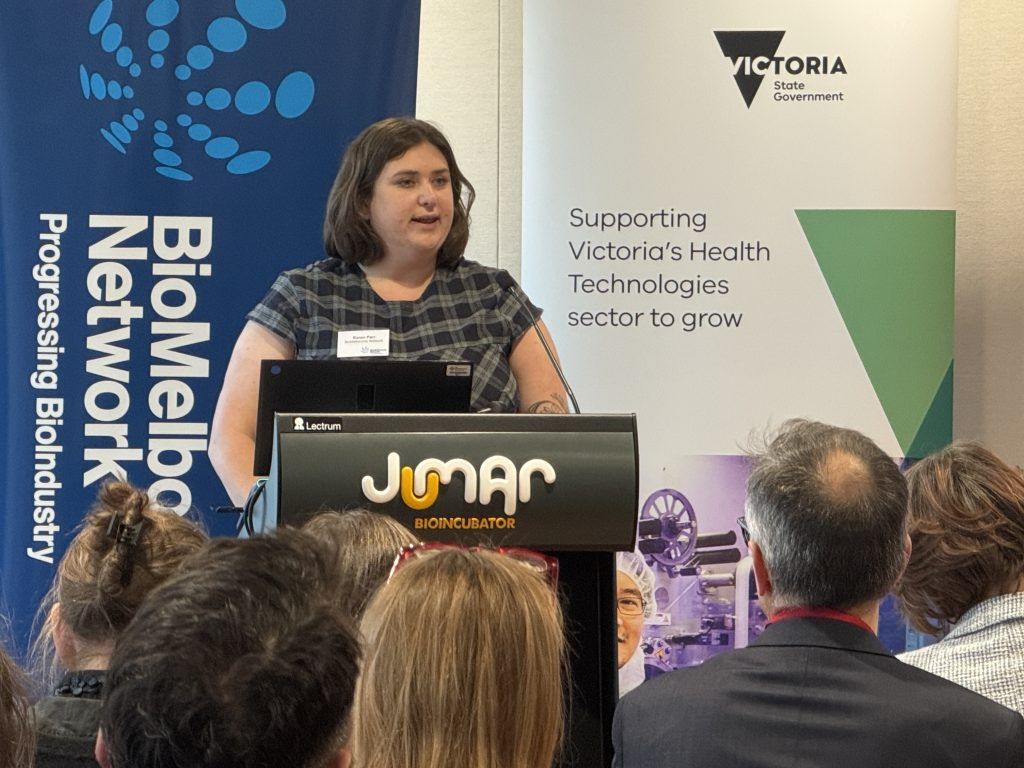
She emphasised the importance of asking bold questions, embracing what we don’t yet know, and building bridges between science, industry, and real-world outcomes.
A threshold moment
Dr Amanda Caples, Victoria’s Lead Scientist, placed the discussion in a broader strategic context:
“There’s no doubt that in 2025, we stand at the threshold of a new era where both AI and quantum technologies will really make a difference to our industry — from drug discovery through to patient selection.”
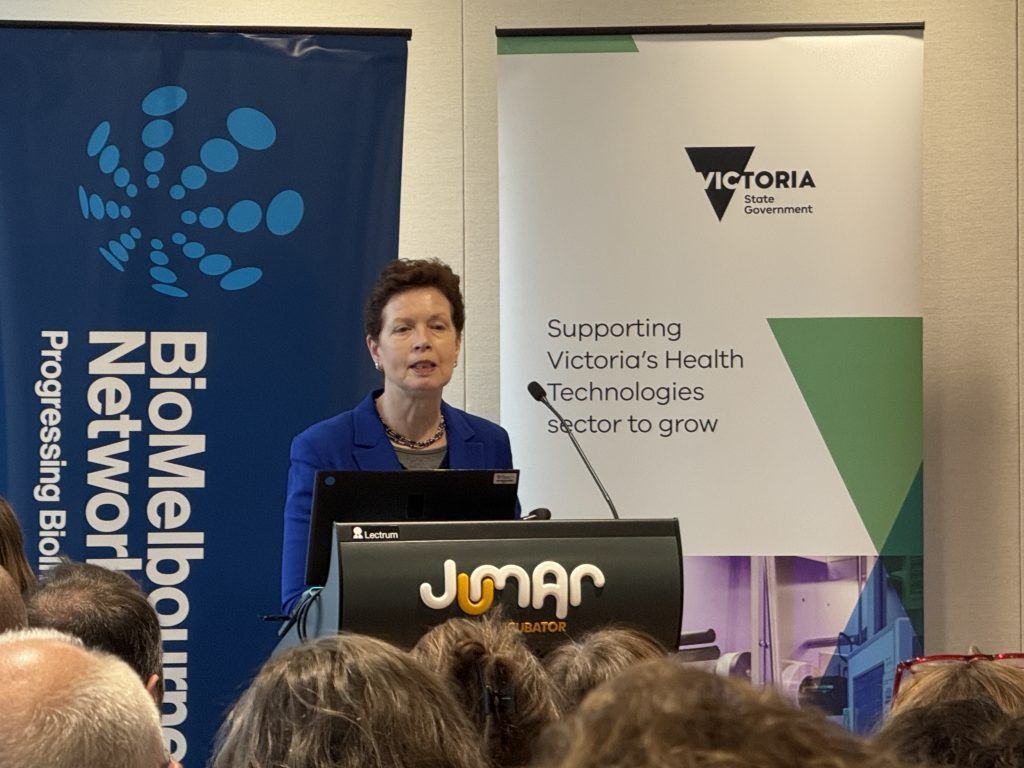 She spoke to the importance of clearly defining what we mean when we say “quantum,” noting: “Quantum computing, quantum sensing, quantum imaging, quantum communications, quantum materials, quantum chemistry — it’s a long list, and I urge you to ask what people mean when they use the word.”
She spoke to the importance of clearly defining what we mean when we say “quantum,” noting: “Quantum computing, quantum sensing, quantum imaging, quantum communications, quantum materials, quantum chemistry — it’s a long list, and I urge you to ask what people mean when they use the word.”
Dr Caples also emphasised Victoria’s strengths across both quantum and life sciences, highlighting the potential to create not just research output, but globally-competitive capability. “This is a dream panel. These are the people I’d want in the room to have this conversation,” she said referring to the breadth of expertise of BioForum speakers and panellists.
Redesigning the pipeline
Professor Guillaume Lessene, Associate Director of Therapeutics Discovery and Head of the New Medicines and Diagnostic Division at the Walter and Eliza Hall Institute of Medical Research (WEHI), offered a pragmatic view from inside the typical medicine development process:
“It is slow, and it is expensive. From the moment we discover a molecule to the time it gets to a patient, it can take 10 to 15 years. And despite this, we’ve been able to develop good drugs. But imagine what we can do if we have the power of AI and quantum.”
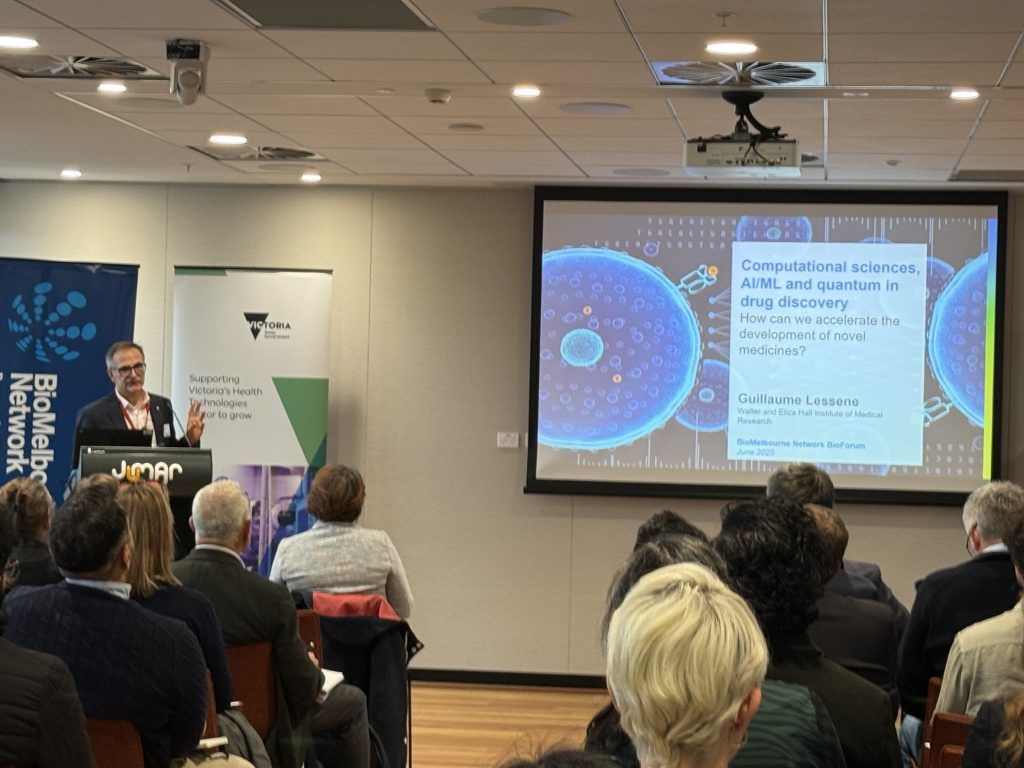
He outlined how quantum mechanics, in particular, allows scientists to better understand dynamic interactions – the ever-changing shape of molecules in the body – which are difficult to model accurately using classical methods. “We’re starting to think more and more about dynamics – how these molecules interact in real life – and this is where quantum will make a huge difference.”
He concluded with a grounding reminder: “At the end of the day, we are not treating patients with virtual drugs. There’s a lot that still needs to be done in physical labs. We still need to make these drugs and test them deeply in clinical trials to make sure they’re safe and actually active.”
Quantum technologies in action
Professor Warwick Bowen, Director of the Australian Research Council Centre of Excellence for Quantum Biotechnology, who flew in from Queensland, expanded on the theme of convergence: “AI is about dealing with a very complex world and finding patterns in it. Quantum computing, on the other hand, allows you to handle certain, very precise, extremely difficult, computations that classical computers just can’t.”
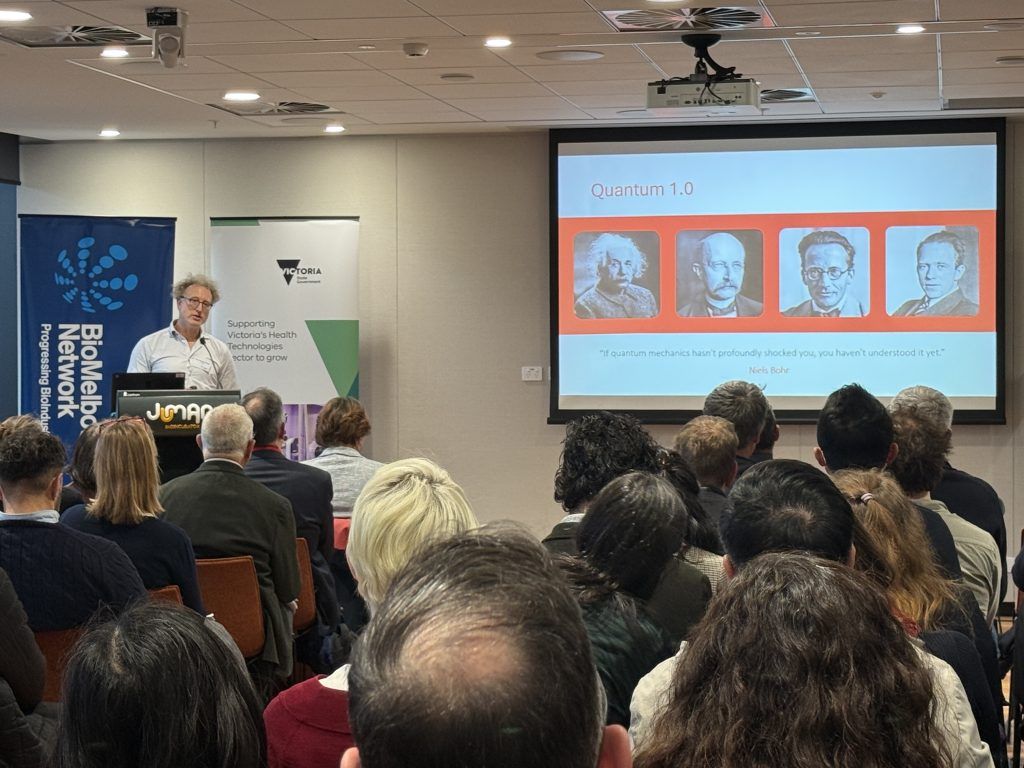
He noted that quantum and AI don’t overlap much, but together, they are incredibly synergistic. Bowen also highlighted the long-standing role of quantum physics in medical technology, reminding the audience that we are building on a century of progress, and that quantum technologies aren’t new – just newly powerful. “Quantum physics underpins so much of what we already use today from MRI machines to the sensors used in blood testing,” he explained.
What’s changing now, he said, is miniaturisation, affordability, and real-time processing. These advances might allow point-of-care imaging and radically new forms of diagnostics. “We already see the impact in imaging, in sensors, and increasingly in simulation. The tools are here. The challenge is connecting them with industry need,” he said, highlighting that this could help make care more accessible across the country, including remote areas.
Designing a self-driving lab
Streaming in from Italy, Professor Giuseppe Barca, Professor of High-Performance Computing and Computational Science at Monash University, provided a window into the development of an AI-powered, quantum-accelerated drug discovery platform.

He described how his team is building a “drug design automaton” that can design, test, and optimise drug candidates using automation and computation — integrating AI, high-performance computing, and quantum chemistry.
“AI in that case is used to take all of these molecules and make sense of them — see what’s new, what’s novel, what has never been made before. And to do some sort of clustering to see where we can go in the unexplored part of the chemical space.”
Professor Barca also explained how quantum methods help prioritise compounds that are worth synthesising: “Then we use quantum chemistry to determine if a compound is any good or not.”
From the panel to the floor: Questions that moved the conversation
Panel chair Dr Simona John von Freyend, CEO of PTNG Scientific, guided the discussion with layered questions — from how to build workforce readiness for quantum-enabled drug discovery, to what interdisciplinary education models are needed to meet future demand. She also asked whether AI is a stepping stone to quantum or a standalone transformative force. This sparked a lively exchange among the panel, who agreed that these technologies are complementary, not sequential, and that success will rely on investing in both.
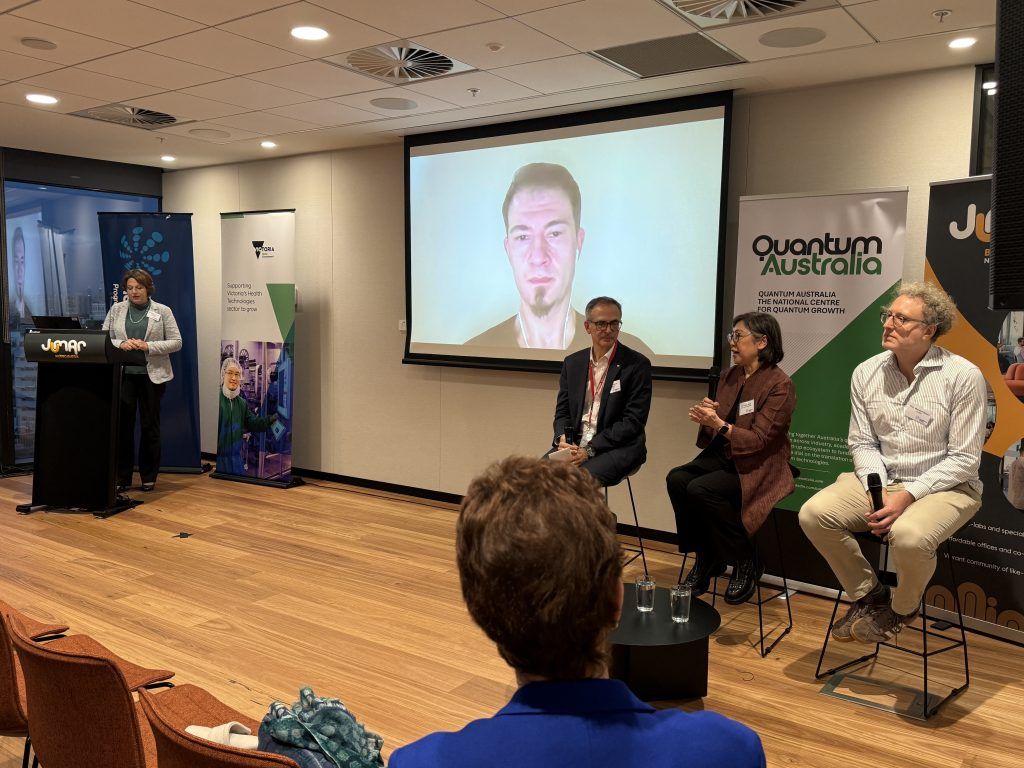
The panel also featured Dr Jane Leong, Director of Development at the Australian Centre for Artificial Intelligence in Medical Innovation (ACAMI), La Trobe University. With deep expertise in commercialisation and AI-enabled solutions, Dr Leong brought a sharp industry lens to the discussion – particularly around scaling innovation and bridging the gap between research, regulation, and market needs. She highlighted the need for early engagement between developers and end users, noting: “We often focus so much on proving the science that we forget to validate the problem.”
As Professor Bowen put it: “The best advances won’t happen in isolation. They’ll happen where people from different backgrounds come together and ask the right questions.”
Throughout the conversation, the speakers emphasised transparency, realistic expectations, and the importance of interdisciplinary collaboration — from quantum physicists and chemists to regulators and clinical researchers. 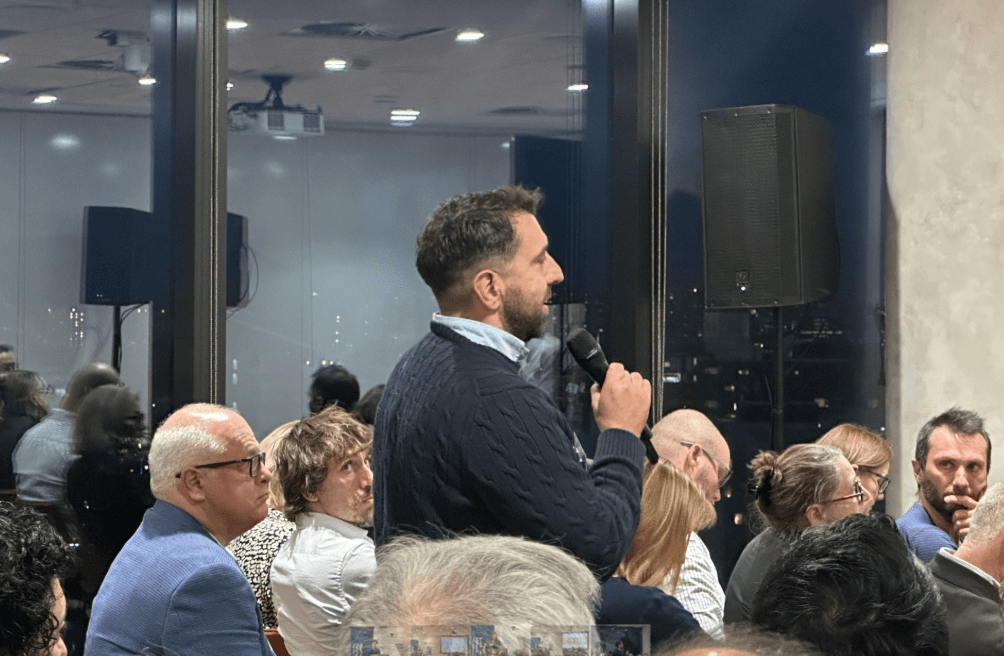
During the Q&A, audience members posed thoughtful and sometimes provocative questions, reflecting the mix of experience in the room. Topics ranged from the availability of quantum infrastructure in Australia, to the risks of bias in AI training data, and the ethical use of automation in decision-making. One attendee asked whether the growing use of “quantum” as a buzzword risks overselling its current capabilities, prompting a rich discussion about managing expectations while staying ambitious. The questions underscored just how invested the sector is — not only in the science, but in the systems and ethics that shape how these tools are applied.

Curiosity, capability, and what’s next
In closing, Joe Dodd, Partnership Development Lead at Quantum Australia, noted that Australia is currently ranked first in the OECD for research publications in both AI and quantum — a position that now needs to translate into capability and impact.
Thanks to the support of the Victorian Government, Quantum Australia, and Jumar Bioincubator, this BioForum created not just clarity, but momentum. It opened a space for discovery, debate, and connection — the first steps toward reshaping what’s possible in drug discovery.
As CEO Karen Parr said at the start of the event: “We’re stepping off the ledge — not alone, but together.” This BioForum was proof of just that.
The full recording will be available on the BioMelbourne Network BioResource Hub – selected resources free to BioMelbourne Network members and a valuable resource for anyone curious to explore more. If you haven’t yet, please follow us on LinkedIn, and sign up for our bi-weekly newsletter In The Loop to keep up with the latest sector news.
